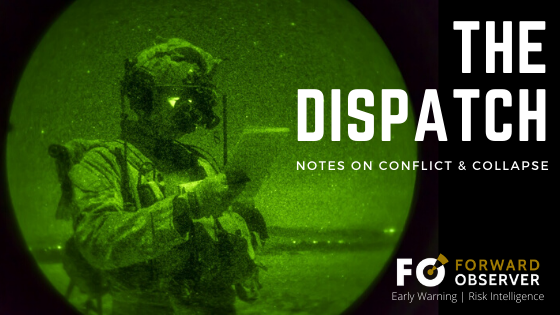For the past couple months, I’ve been hitting some old counterinsurgency standby’s. The last time I read most of the these manuals and books was prior to deployments to Iraq and Afghanistan.
Somehow insurgency followed us back.
Given that the reelection of President Trump is likely to blow wide open these urban insurgencies, it’s long past time for us to begin or continue learning about the cat and mouse of the insurgent and counterinsurgent. In this case, anarchist insurrectionists are trying to foment a broader insurgency against local, state, and federal government.
In his book Counterinsurgency Warfare, author David Galula outlines six strengths and weaknesses that determine the potential for a successful counterinsurgency campaign. I’ll list them below with some brief notes on the current situation.
1. Galula writes that an absence of problems in a country makes insurgency virtually impossible. Since there is no absence of problems — we have both real and artificial problems in this country — an insurgency was virtually inevitable as soon as local, state, and federal governments were weakened, as they are now.
2. Next, a national consensus against insurgents is a strength that this country currently lacks. There’s no national consensus on anything, and there’s substantial support for the insurgents, which strengthens the urban insurgencies.
3. Resoluteness of counterinsurgent leadership is the next strength or weakness. The Trump administration currently has the resolve to wage counterinsurgency, but there’s been opposition from state and local governments. The insurgents’ political and social efforts will focus on degrading the administration’s capacity to execute a counterinsurgency campaign, increasingly so after President Trump’s potential reelection. (The activism against ICE in previous years is a good example.) The Trump administration will face significant problems in instituting a whole-of-government approach, likely leading the administration to take more deliberate or extreme actions, which will increase accusations of fascism.
4. A major factor in any outcome is the counterinsurgents’ knowledge of counterinsurgency warfare. The Trump administration will rely on those with experience in Iraq, Afghanistan, and other places where a shaky counterinsurgency strategy was unevenly applied. Regardless of strategy, defeating urban insurgencies could become a multi-year process in places like Portland and Seattle, as America experiences its own version of the “Irish Troubles” — albeit not an exact comparison.
5. The machine for control of the population includes four factors which a second Trump administration could lack: the political structure (x), the administrative bureaucracy (x), the police (✓), the armed forces (x/✓). If reelected, President Trump will either face a split Congress or a Democratic majority in both the House and Senate, and lack control of the political structure. The Trump administration doesn’t have control of the administrative bureaucracy now and is likely to lack control in a second term. The Trump administration will likely retain control over most federal law enforcement, and is likely to have influence over some local and state law enforcement — that’s certainly less the case in areas where there’s local political support for the insurgencies. Army Secretary Mark Esper and GEN Mark Milley, Chairman of the Joint Chiefs of Staff, last month demurred at the deployment of regular Army troops to confront rioters. Esper and Milley can be replaced with military officials who are more amenable to using the military to put down insurrections, but Democrat-majority Congress would cast doubt on how effective the use of armed forces would be.
6. The sixth and final factor is geographic conditions. These insurrections will primarily occur in urban areas, regardless if they trigger a national insurgency. The most important thing we learned about fighting against urban insurgents in Iraq and Afghanistan is that the counterinsurgency effort can be incredibly disruptive to the city.
Both sides are vying for support of the populace, so the insurgent must develop and propagandize a cause that will garner popular support — this is where the overall effort is won or lost.
These are some initial thoughts on what we could be looking at for at least the next four years, based on Galula’s factors presented in Counterinsurgency Warfare. These are not predictions, of course, but I do hope these initial thoughts are helpful in understanding the future.
If you want a daily look at how these conditions are developing, sign up for my daily Early Warning intelligence brief.
These daily intel briefs keep readers informed of new developments, and move them past situational awareness to situational understanding.
You can stay reliably informed on the people, groups, and events threatening the country with Early Warning.
Until next time, stay out front.
Always Out Front,
Samuel Culper


To my knowledge, they aren’t conducting any insurrections or insurgencies right now.
I view the 3 percent favorably so I meant unfavorable differently. Certainly hope the 3 percent aren’t conducting any insurgencies, etc. but aren’t they at least worth mentioning as a part of the counter-insurgency solution, even if unfavorably?